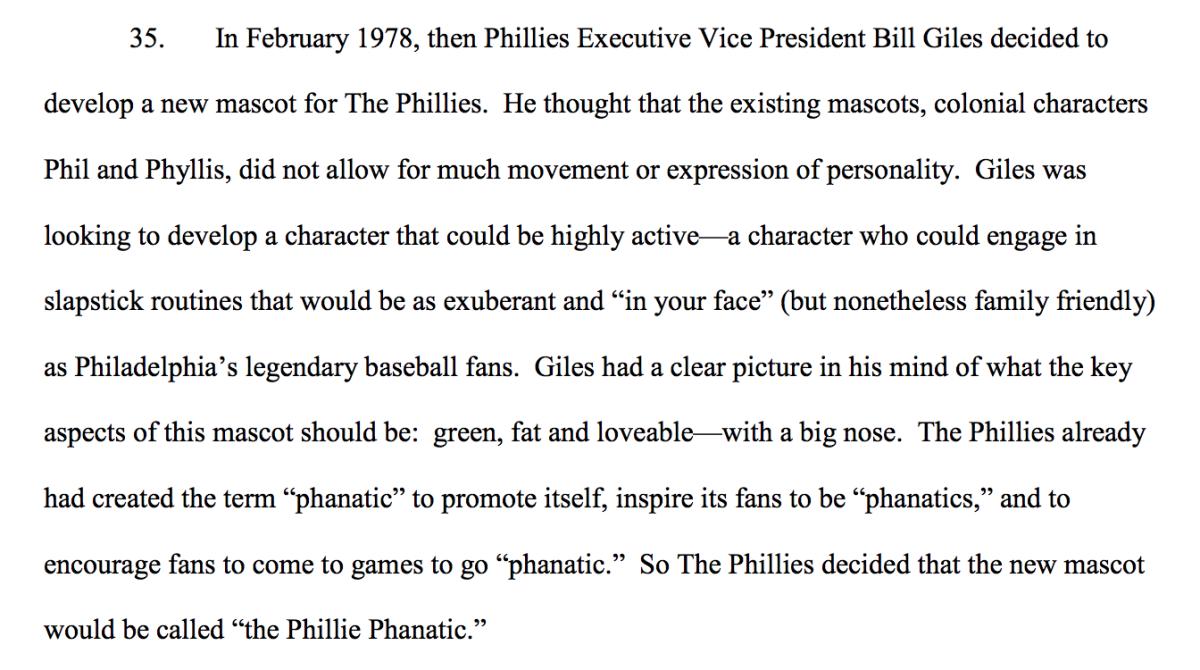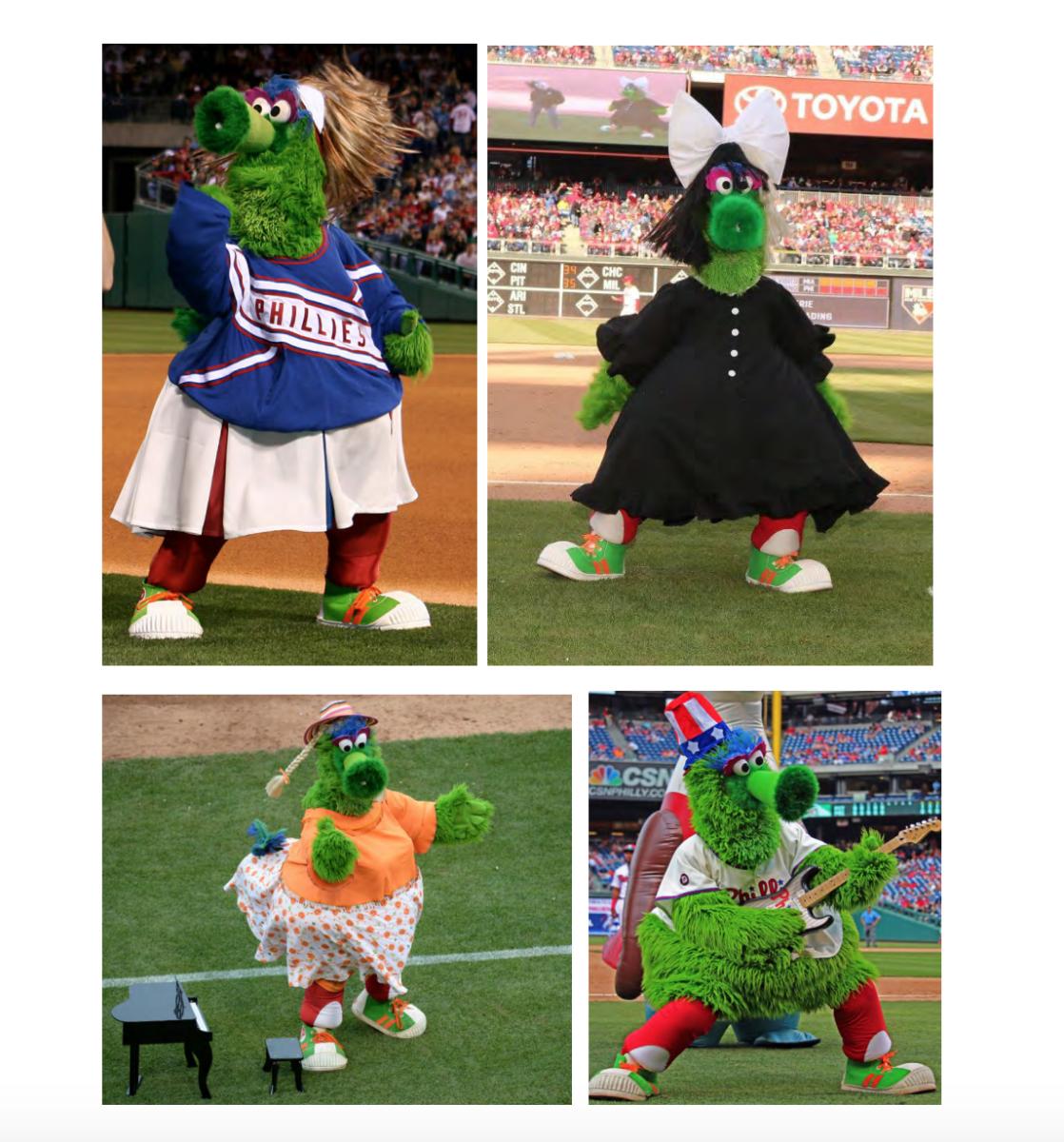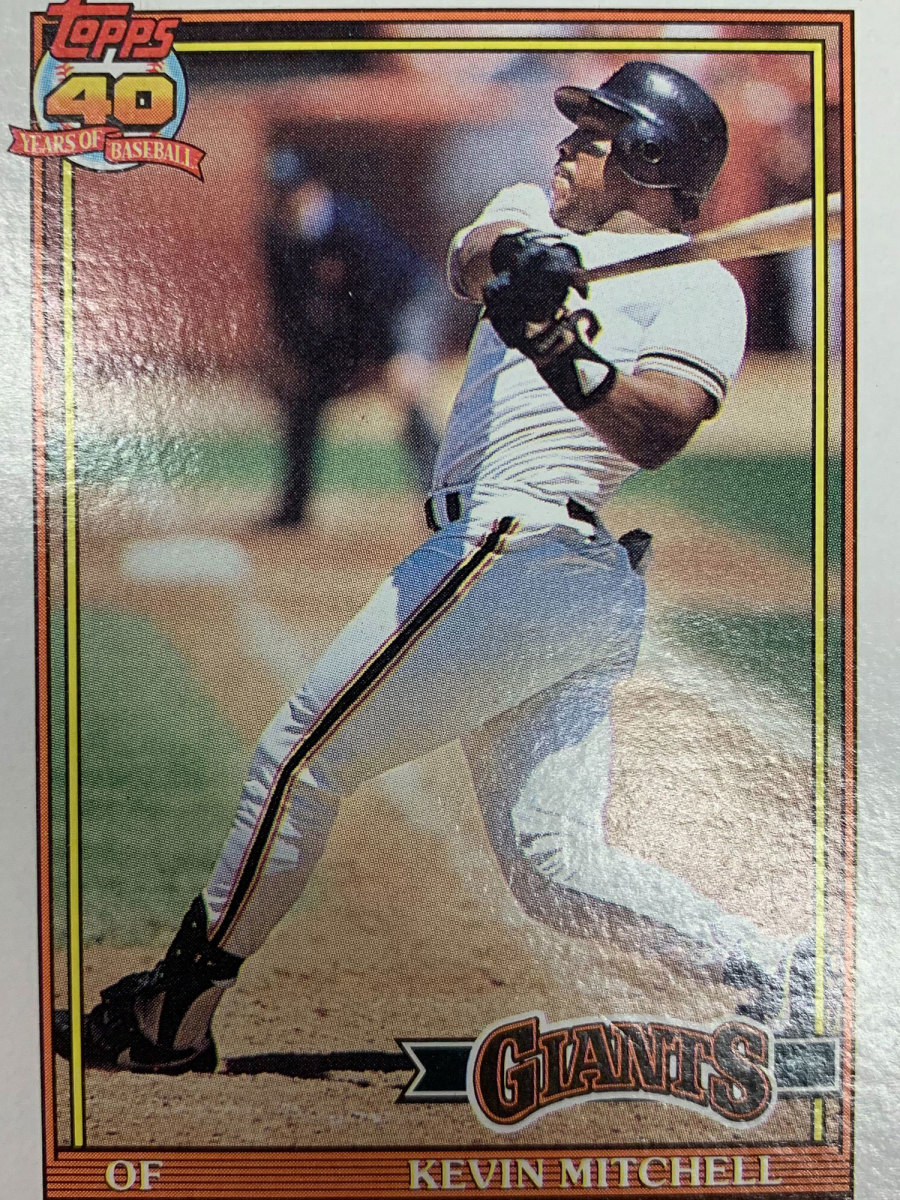The Astros Seem to Know Something About Pitching No One Else Does

Welcome back to Nine Innings, SI’s weekly look at what’s fun, cool, and somewhat stupid around the league. Today’s topics include: the Astros’ magic pitcher factory; Vince Velasquez, superhero; the Phillie Phanatic goes to court; and much more.
If you have any feedback, questions or angry rants to send my way, please don’t hesitate to hit me up via email (jon.tayler@simail.com) or Twitter.
What can’t the Astros fix? It’s a legitimate question after the latest magic trick they pulled, taking a starter with a 6.07 ERA and turning him into the first piece of a combined no-hitter in his very first start with the team. Granted, Aaron Sanchez is—at least talent-wise—no slouch: He was a Cy Young contender in 2016. And that debut came against a Mariners team that long ago hung up a “CLOSED” sign on its season. But Sanchez’s immediate revitalization is yet more proof that Houston is ridiculously good at pitcher development—or maybe a sign of just how bad everyone else is at it.
The key to Sanchez’s success is, unsurprisingly, using his worst pitch less. His sinker has been clobbered all year: a .370 batting average and .558 slugging percentage against. Despite that, while on the Blue Jays, he threw that pitch more than any other in his arsenal—nearly 30% of the time. Moved to Houston at the deadline, the Astros had him ditch the sinker and throw his four-seam fastball and high-spin curve more. The result: six hitless frames and a new repertoire that may unlock Sanchez’s previously disappeared dominance.
Aaron Sanchez is just the 2nd pitcher ever (Mark Langston, 1990) to be part of a combined no-hitter in his 1st start with a team.
— MLB Stats (@MLBStats) August 4, 2019
(h/t: @StatsbySTATS) pic.twitter.com/LLdo7mNKJE
It shouldn’t be that simple. Major League Baseball is a multi-billion-dollar enterprise. Teams have front offices full of smart, forward-thinking people, and most have sunk tons of resources into research and development teams, not to mention machines that can capture even the most infinitesimal data about every last thing a player does. Nothing is beneath notice, and the amount of information available—and the analytics that exist to make sense of it—is virtually endless.
Yet somehow, Toronto couldn’t figure out that Sanchez should throw his worst pitch less and maybe try something else. Then again, the Jays aren’t alone in that regard. The Astros have pulled similar tricks with Gerrit Cole (languishing on the Pirates) and Ryan Pressly (underappreciated on the Twins). In both cases, each player came to Houston, which had already identified a plan for improvement involving tweaks, sequencing, pitch selection, and other factors, and rapidly implemented them. The result: Cole is one of the majors’ top starters; Pressley is one of the league’s best setup men.
Still funny. Still so very funny. pic.twitter.com/2GgDAWbmU9
— Mike Petriello (@mike_petriello) August 5, 2019
It makes you wonder what the missing ingredient is—what the Astros are doing that other teams can’t despite evidence as to what needs to be fixed. Is it a matter of communication? Has Houston mastered the art of presentation? Whatever it is, that’s the edge for the Astros right now: Give them a pitcher, and they’ll make him better, in some cases literally overnight.
That’s a scary reality for the rest of baseball, and one that should give pause to front offices when the Astros come calling about particular pitchers. But I want to see this taken to the nth degree. The 2020 Houston rotation should only be comprised of the worst pitchers in baseball, just to see how good the Astros truly are at this: Rick Porcello, Matt Harvey, Ivan Nova, Andrew Cashner, and a rotating Oriole of choice, every single week. For most teams, that’s a recipe for 120 losses. For the Astros, that’s probably a championship starting five. Aaron Sanchez is proof enough that no pitcher is apparently too big a task.
This Week In … Vladimir Guerrero Jr.!
The Awakening is upon us. After an unexceptional start to his big league career, Vlad Jr. is now fully operational. Since the All-Star break, he’s hit a ridiculous .394/.456/.690, and over his last two weeks, he’s at a cool .458/.509/.833—numbers that recall his utter destruction of the minors. And in his last series, Guerrero was a one-man wrecking crew against the Orioles, picking up 10 hits in 17 at-bats, including a pair of homers last Thursday, the second of which went about halfway to the moon at approximately 500 mph.
(I’m assuming the screams in the background of the video are the kids in attendance, but I prefer imagining it’s the internal soundtrack of the poor Orioles pitchers forced to face Vlad.)
Even in a game as tough as baseball, the odds were against Vlad Jr. being a bust, if only because of how stupidly good he’d been so far. It’s rare that a player dominates the minors that young and that easily; for him to flop wholesale in the majors would have been a surprise. Yet that was always a possibility, a terrifying end to something so full of promise. And for a little bit there, that worry was huge and heavy. But now it’s firmly in the past, as Guerrero has adjusted. The next step, though, will be crucial: How he responds when the league counters.
This Week In … Unexpected Superheroics!
Last Friday’s Phillies-White Sox game was a hoot, and not just because it went 15 innings and featured Gabe Kapler trying to get two innings out of a position player pitching. It was also the origin story for the latest and greatest superhero: Vince Velasquez.
Ordinarily one of the more frustrating pitchers in a rotation full of them, Velasquez was pressed into service in the 14th inning as a leftfielder while centerfielder Roman Quinn was on the mound because the Phillies are an abject disaster. Anyone expecting sad shenanigans, though, got a big surprise when Velasquez showed off his cannon of a right arm on this perfect, one-hop throw to the plate to nail Jose Abreu and keep the White Sox from scoring the go-ahead run.
If that weren’t enough, Velasquez somehow almost pulled off the same trick again the next inning, nearly nabbing Leury Garcia at home on a play that went to replay review (and was correctly upheld, though honestly, Velasquez made it so close that the umpires should’ve called Garcia out on principle). And as a final note, he made a sprawling catch in left that same inning to keep the Phillies’ deficit to a single run.
In hindsight, Velasquez’s excellent night isn’t that crazy: He played centerfield in high school and apparently has long lobbied to play it in the majors. (He’s also a switch-hitter, which is a nice reminder that major leaguers are ultra-freak athletes.) But for the sake of the superhero narrative, I’ll pretend Velasquez was bitten by a radioactive Bryce Harper before the game, giving him the powers necessary to pull off that ridiculous suite of plays.
This Week In ... Mascot Lawsuits!
Velasquez wasn’t the only member of the Phillies getting busy last Friday. That same day, the team filed a lawsuit against Harrison/Erickson Incorporated, the company that created the Phillie Phanatic in 1978, over a copyright dispute in which H/E sought to make the Phanatic a free agent. Leaving aside the sheer delight of a massive bidding war over a fuzzy green giant who can’t talk, the Phillies obviously don’t want to lose the Phanatic, who’s as much a symbol of Philadelphia as the Liberty Bell and a guy named Geno calling into WIP to yell about Donovan McNabb. Thus, the lawsuit, in which the team is battling H/E over branding rights and money and other such legal things.
To the great dismay of my parents, I’m not a lawyer, so I’m not going to try to explain who’s in the right or wrong here. Instead, after poring through the 39-page suit, I’ve picked out my favorite passages from a legal document in which the word “Phanatic” is used 190 times.
1. The part where the Phanatic, who is a walking carpet with a tube nose, is referred to as a “sculpture”

There’s a legal reason as to why H/E wanted the Phanatic referred to as such, but I’m just here for the idea of the Phanatic being posed in a sculpture gallery like Apollo resplendent (and also for the description of him as a “shaggy creature.”)
2. The part where the Phanatic is basically Poochie

No word on whether the Phillies sought a mascot who gets “biz-zay,” or if they envisioned him as a totally outrageous paradigm.
3. The part where multiple images of the Phanatic in various costumes are introduced as evidence in a real lawsuit filed by real lawyers

And that’s just one of many pages of photos of the Phanatic dressed up. I would love to meet the paralegals tasked with drafting this lawsuit just to ask them how many times they fell apart laughing while pulling photos for it.
This Week In … Netting Being Good!
Netting at stadiums: It’s a good thing! Anyone who thinks otherwise is as dumb as the ground they walk upon and shouldn’t be listened to. But expanded netting isn’t just helping protect fans from foul balls; it’s also added a new element of fun to the game itself. To wit, here’s Jeff McNeil using the nets to help him make a catch:
And here’s Gio Urshela snagging a ball while not barreling into folks in the seats.
In both cases, the nets served their intended purpose of keeping people—both fans and players—safe. But particularly in McNeil’s case, it turned a routine out into a bit from American Ninja Warrior (or at least Wipeout). If more netting means more chances of a play like that happening again, then MLB teams should put them up everywhere.
This Week In … Nickname Theft!
Last week, the Dodgers called up their top pitching prospect, Dustin May, a lanky righthander whose calling card is—depending on what you care most about—either his overpowering arsenal (including a 96-mph fastball) or his enormous mop of red hair.
This is a Dustin May hair appreciation tweet. pic.twitter.com/ukuhRMJPYy
— Cut4 (@Cut4) August 3, 2019
Fittingly, that blazing bit of follicular bravery has earned May the nickname “Gingergaard,” as a tribute to Noah Syndergaard, both in terms of the stuff coming out of his hand and growing out of his head. One man, though, isn’t a fan of that moniker: Syndergaard.
Syndergaard on Gingergaard: "That's just [stupid]. … I really don't care about an opposing pitcher."
— Mike Puma (@NYPost_Mets) August 3, 2019
I’m assuming Syndergaard said a harsher word there than “stupid,” but regardless, it’s clear he’s not thrilled about a rookie jacking his name (if not also his style). I agree with him, to a point: Nicknames should be earned, and while May has the stuff to be a version of Syndergaard cross-bred with Reed Richards and a clown wig, it feels too early to label him, essentially, the next Thor. (Besides, Jane Foster is the next Thor.)
On the other hand: Man, Gingergaard is a great nickname. In a sport devoid of fun or funny sobriquets, it’s imperative that we hang on to the good ones for dear life. This court rules, therefore, that Gingergaard stays, even if Syndergaard doesn’t like it.
This Week In … Mascots Getting What They Deserve!
Mascots: They’re feral monstrosities who should be hunted for sport! That goes for Rays abomination Raymond, who looks like one of Dr. Seuss’s lazier creations and makes the children who attend every Tampa home game cry themselves into a tizzy. Thankfully for those kids, though, WWE/NXT wrestler Matt Riddle was there on Sunday to put Raymond into his place—namely, the damn ground.
I don’t know why Riddle went full crossbody on Raymond, but the safe assumption, given that he’s a mascot, is that Raymond stole that wrestling belt and planned on selling it to terrorists in order to finance a drug habit. Kudos to you, Matt Riddle, defender of the children.
This Week In … This Week’s Worst Play of the Week!
Some advice for fans in pursuit of foul balls, as this pair was: Don’t go too far all for something worth a few dollars, and don’t ruin someone else’s day in the process. In Tampa, Idiot Fan No. 1 broke that first rule by scampering way too far out of the stands—in this case, onto a tarped-over section—all for a ball. In Texas, Idiot Fan No. 2 not only sacrificed a helmet full of nachos but also ended up getting cheese all over the older gentleman in front, who handled this way better than I would have (read: didn’t destroy Idiot Fan No. 2’s face). For their wanton, moronic efforts, these two dudes earn this week’s worst play of the week honors.

This Week In … Old Baseball Cards!
Each week, I’ll pluck a random baseball card out of a pile of 1980s, 90s and 2000s cards I have at my desk, then write a quick little take on the player in question. This week’s entry: Kevin Mitchell, outfielder, San Francisco Giants (Topps 1991)
As far as what-ifs and bummers go, few were bigger in the 1990s than Kevin Mitchell. A star for the ’86 champion Mets and the NL MVP in ’89 for the Giants, Mitchell entered the decade as one of the best players in baseball. Sure, his defense was iffy, his weight was a concern, and he managed to stand out as a bad influence in a Mets clubhouse that wasn’t short on those. But with that MVP season in ’89 and a strong campaign in ’90, he looked to be on a path toward superstardom.
Instead, 1991 was the beginning of the end. Hampered by injuries, Mitchell played in just 113 games and saw his batting average and on-base percentage plummet. Although he hit 27 homers, the Giants traded him to the Mariners that offseason. “I saw production going down. I saw age and weight going up,” San Francisco general manager Al Rosen said bluntly afterward to Inside Sports. He was equally frank with the San Francisco Chronicle: “There are certain guys who just aren’t cornerstone players to a franchise…. Seattle is the fourth club that has had Mitchell, and I’m sure he’ll see more before his career is over.”
Rosen was right. Mitchell would play for five more teams in the next seven years, struggling with injuries and his weight the whole time, before falling out of the league midway through the 1998 season. It was the sad conclusion to a career that had started with so much promise and was built on a ton of natural talent.
